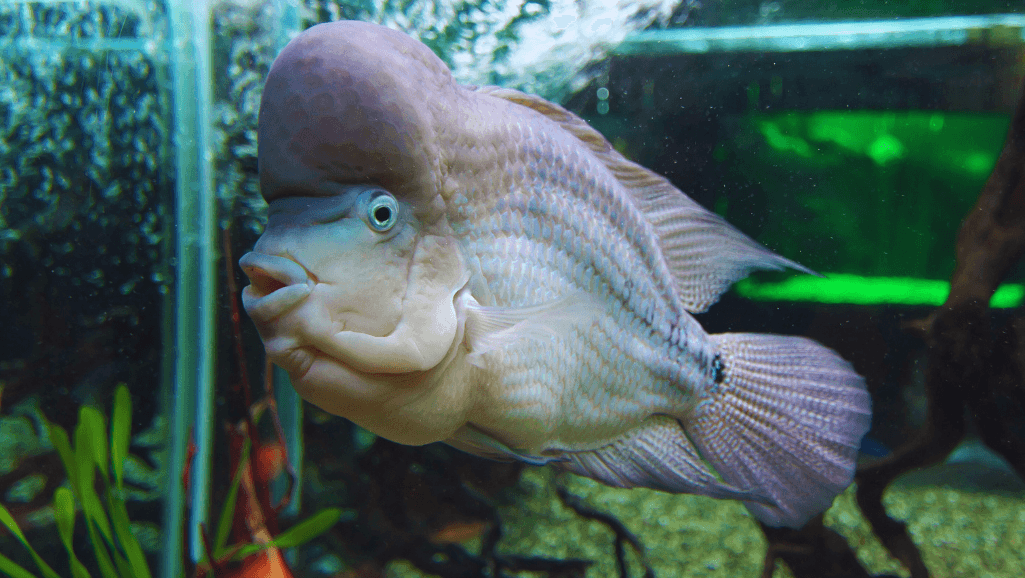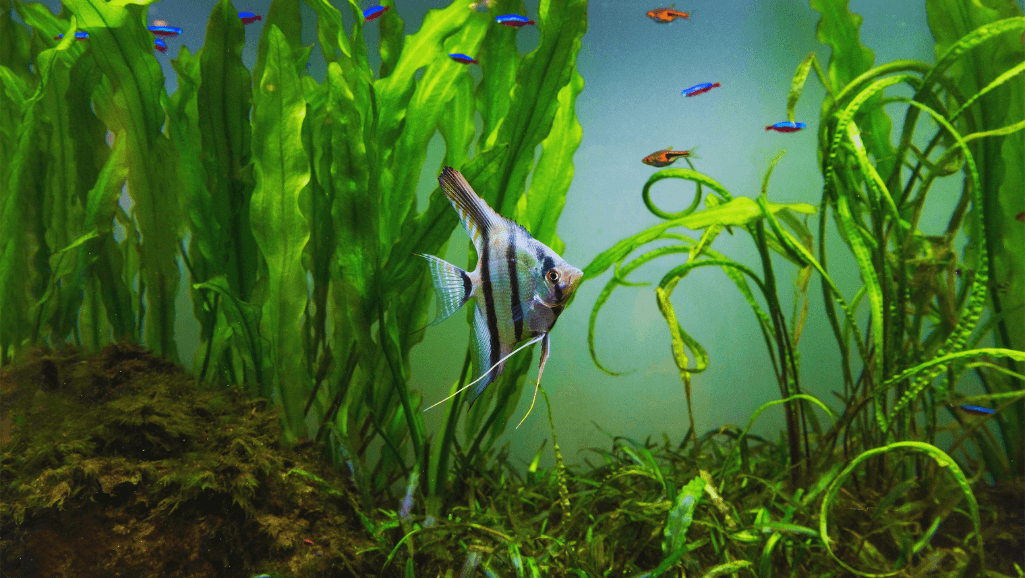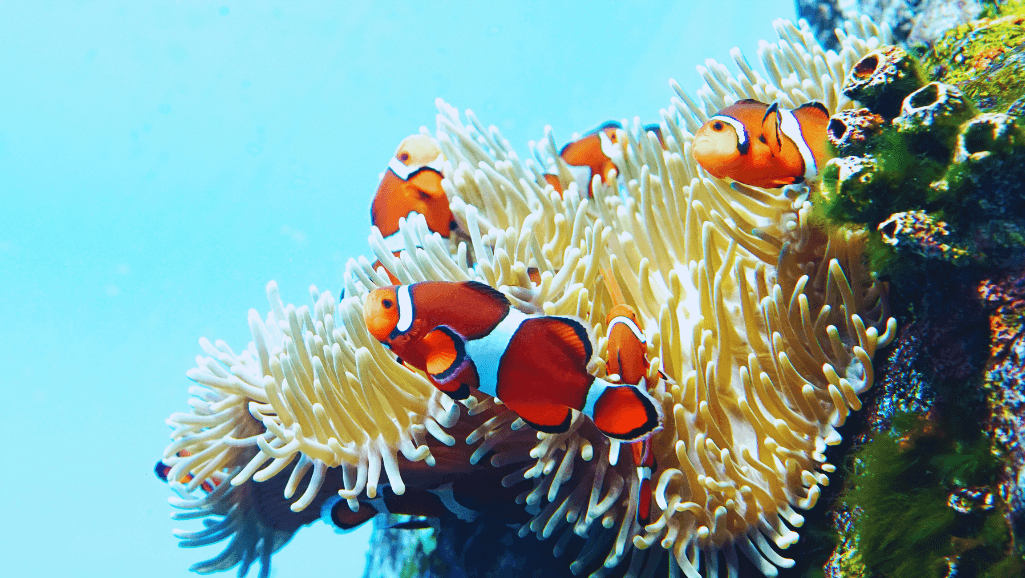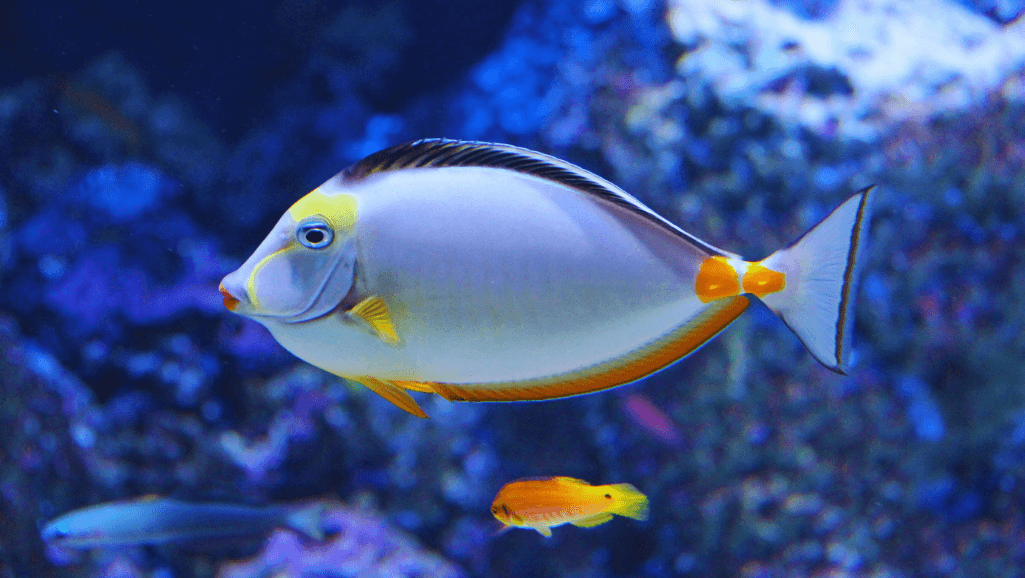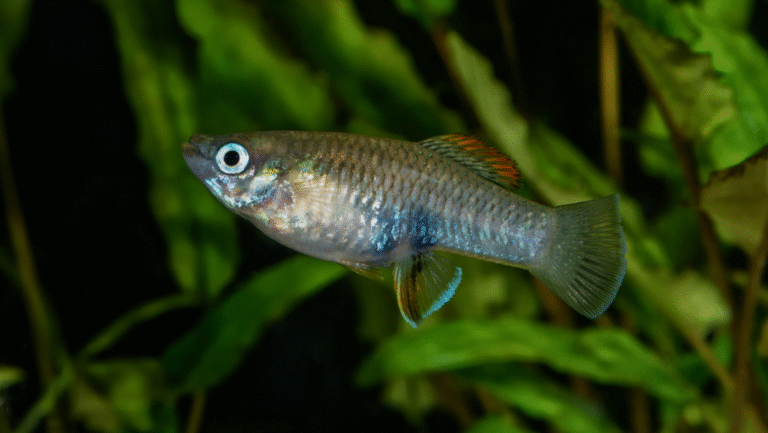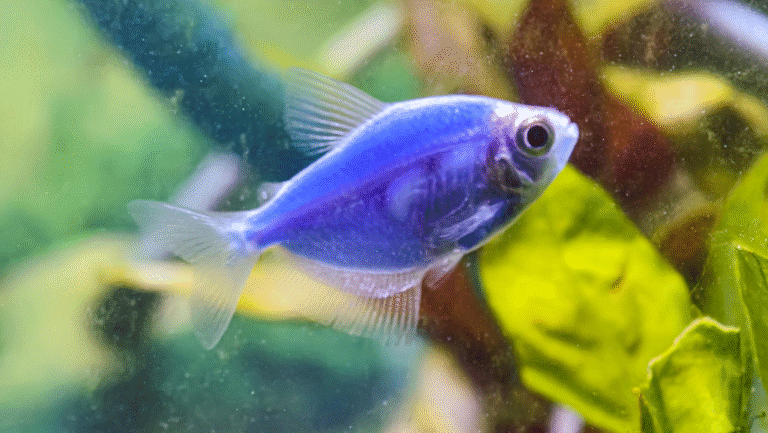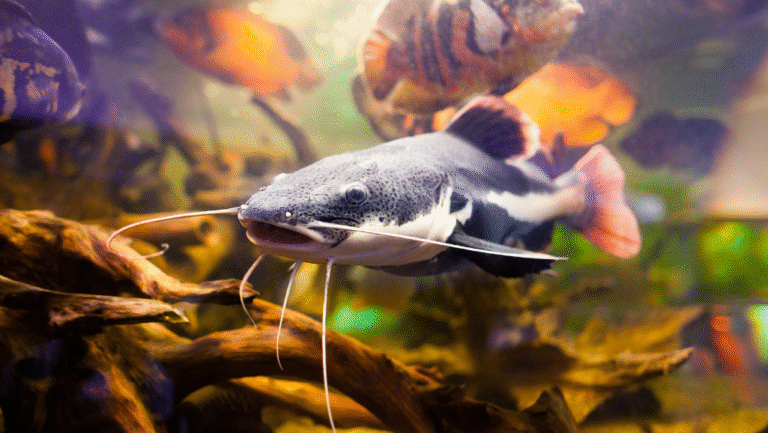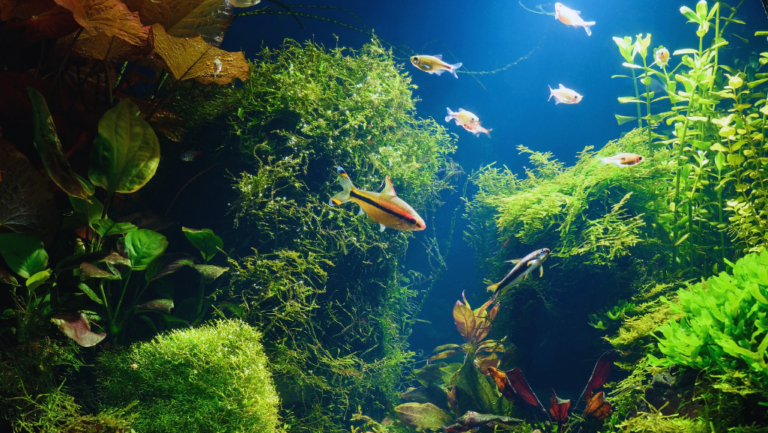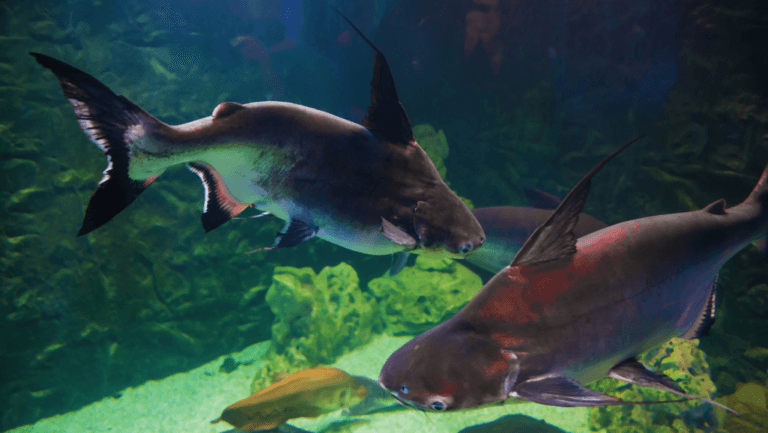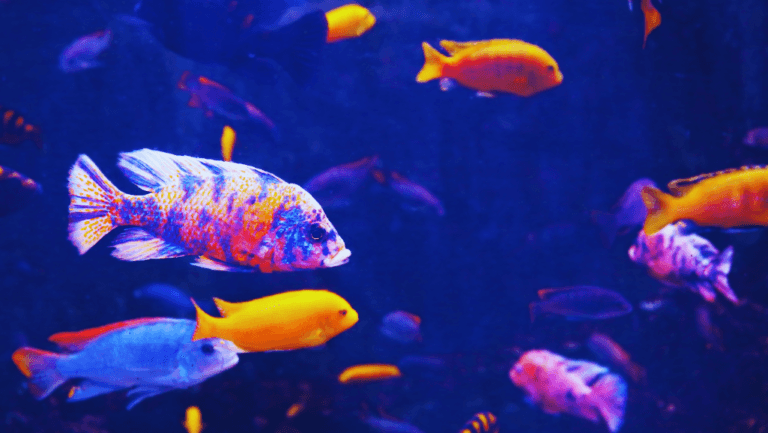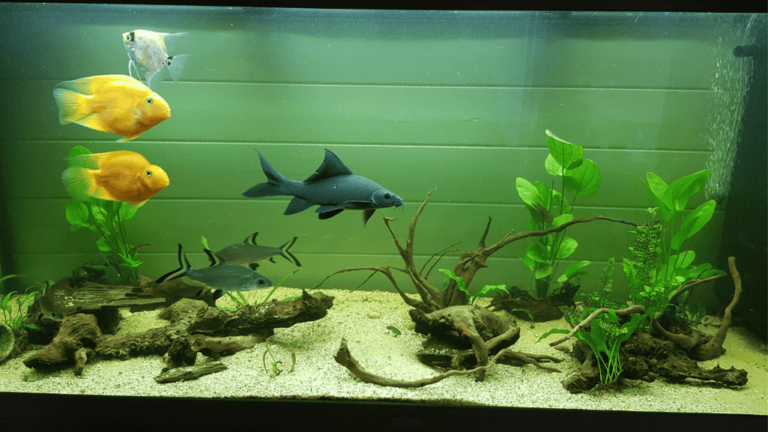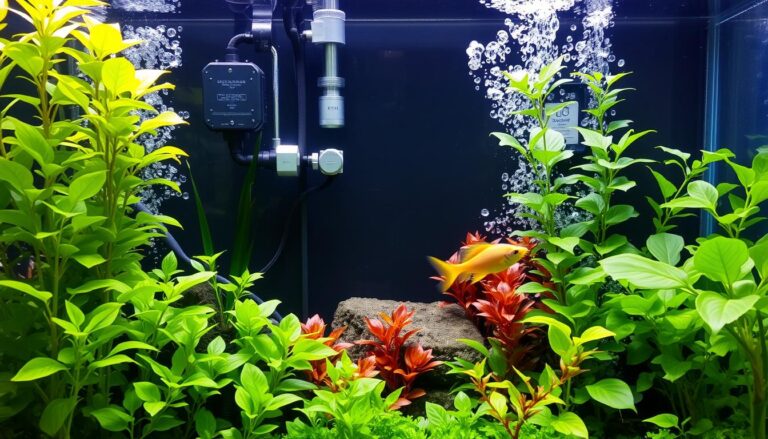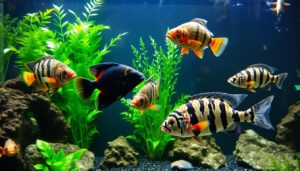For those eager to explore the world of home aquatics without the heat, finding the best cold water fish for aquariums is exciting. These fish thrive in cooler waters, between 50-65°F. This guide helps you choose from a wide range of species.
Species like the Guppy and White Cloud Mountain Minnow are lively. The Rainbow Shiners and Comet Goldfish add beauty and space to your tank. Each option is unique and captivating.
Watching a Zebra Danio or a Pygmy Sunfish swim can turn any room into a peaceful oasis. Keeping the top cold water fish for home aquariums brings beauty and calm to your space.
Key Takeaways
- Explore Top Cold Water Fish Species for Aquariums.
- Optimal temperature ranges for cold water species are critical for their well-being.
- Species like the Guppy and White Cloud Mountain Minnow are tailor-made for cooler aquatic environments.
- Choosing the best cold water fish for aquariums ensures both visual allure and ease of care.
- Understanding individual species requirements is key to a thriving aquatic ecosystem.
- With proper attention, cold water fish offer a rewarding and enriching aquarium experience.
Understanding Cold Water Aquatics for Home Aquariums
Exploring home aquariums opens up a magical world of cold water species. These fish are not only beautiful but also easy to care for. This makes them a great choice for many aquarium lovers.
What Qualifies as a Cold Water Aquarium Fish?
Fish that do well in cooler water than tropical tanks are cold water species. They thrive in temperatures from 50°F to 65°F. Examples include goldfish, black moor, and shubunkin.
Benefits of Choosing Cold Water Fish for Tanks
Choosing cold water fish for tanks saves energy. These setups need less heating, which saves money and is better for the planet. Plus, they’re easier to care for because they don’t need strict temperature control.
Essential Tips for Cold Water Fish Tank Setup
Setting up a cold water aquarium starts with knowing your fish’s needs. Think about tank size, filtration, and temperature. Here’s a quick guide to help you:
- Choose the Right Tank Size: Cold water fish can grow big. They need a tank that’s at least 20 gallons to have enough space.
- Effective Filtration: Cold water fish make more waste. You need a strong filter to keep the water clean. Good filters handle the extra ammonia.
- Stable Water Conditions: Cold water tanks don’t need heaters but need a stable temperature. Insulate the tank or keep it in a stable place to avoid sudden temperature changes.
Focus on these key points for a healthy cold water tank. It’s rewarding to care for these beautiful fish. Learn more about their needs and preferences in this detailed discussion.
Whether you’re new or experienced, cold water aquatics are captivating. With the right knowledge, you can create a peaceful and sustainable aquarium at home.
The Iconic Goldfish: A Classic Cold Water Companion
The goldfish, or Carassius auratus, is a top pick for cold water tanks. It’s known for its bright colors and lively nature. Goldfish come from China’s cool streams and love temperatures between 65°F and 75°F. They also need lots of room to grow.
Goldfish are social and do well in groups. They are also calm, making them perfect for community tanks. Here are some key cold water fish care tips for a healthy goldfish tank:
- Keep the water temperature between 68º and 76ºF.
- Make sure the tank is big enough, at least 30 gallons for grown-up goldfish.
- Use a good filter to handle their waste.
- Feed them a mix of foods, like flakes, pellets, bloodworms, and tubifex, two to three times a day.
- Change the water often to keep it clean and full of oxygen.
When talking about cold water aquarium fish care, goldfish need lots of space and care to avoid diseases. They are easy to care for and add beauty to any tank. But, they need careful feeding and tank upkeep to stay healthy and live long.
Here’s a table showing what goldfish need to stay healthy:
| Characteristic | Detail |
|---|---|
| Lifespan | 10-15 years, can live up to 44 years with the right care |
| Common Color Variations | Gold, white, black, and calico |
| Feeding Frequency | 2-3 times a day |
| Size Range in Captivity | Up to 12 inches |
| Behavior | Social, not speedy, actively explores environment |
| Plant Compatibility | Compatible with tougher plants like anubias and java fern |
| Minimum Tank Size | 30 gallons, with larger being preferable |
| Water Temperature | 65°F-75°F |
| Common Diseases | Ich, velvet disease, fin rot |
For goldfish to thrive, they need space and consistent care. They are a key part of the cold water aquarium world. With the right care, they can be a joy to watch and keep your tank healthy.
Best Cold Water Fish for Beginner Aquarists
Starting an aquarium can be thrilling, especially with cold water fish for beginner aquarists. The White Cloud Mountain Minnows, Zebra Danios, and Japanese Ricefish are great for beginners. They are beautiful and easy to care for, perfect for new aquarium keepers.
White Cloud Mountain Minnows are very hardy and can live in different temperatures. They like cooler water, between 60°F and 72°F (15°C and 22°C). These fish are peaceful and love to swim together.
Zebra Danios: Adaptable and Easy to Care For
Zebra Danios are very adaptable, making them suitable cold water fish for aquariums for beginners. They can handle different water conditions and temperatures from 64°F to 75°F (17.8°C to 23.9°C). Their playful nature and hardiness make them easy to care for in a home tank.
Japanese Ricefish: Unique and Adaptable Swimmers
Japanese Ricefish are charming and versatile, surviving in temperatures from 41°F to 86°F (5°C to 30°C). This makes them ideal beginner cold water fish for aquariums, especially for those looking for something unique.
In conclusion, picking the right fish for a new aquarium is crucial. For beginners, cold water fish for beginner aquarists like White Cloud Mountain Minnows, Zebra Danios, and Japanese Ricefish are great. They require little care and can adapt to many conditions, making them perfect for starting your aquarium journey.
Discover Popular Cold Water Aquarium Fish Species
Choosing popular cold water aquarium fish is key. Look for species that do well in cooler water and add beauty to your tank. The cold water aquarium fish list includes many stunning options. Pearl Danio, Rosy Barb, and Bloodfin Tetra are just a few examples of top cold water fish for aquariums.
| Fish Species | Temperature Tolerance (°C) | Tank Size (Litres) | Group Recommendation | Origin Habitat | Social Behavior |
|---|---|---|---|---|---|
| Pearl Danio | 15.6-25 | 38-76 | School of 6+ | Mountain Streams | Peaceful, Active |
| Rosy Barb | 15.6-25 | 57+ | Group of 5+ | Fast-flowing Rivers | Semi-aggressive |
| Bloodfin Tetra | 15.6-23.9 | 38 | School of 6+ | River Basins | Peaceful |
| Buenos Aires Tetra | 15.6-23.9 | 76 | School of 6+ | Stream-like Conditions | Finnipping, Active |
| Gold Barb | 15.6-25 | 38-76 | Group of 5+ | Lakes, Slow Streams | Peaceful |
| Dojo Loach | 15.6-25 | 76 | Solitary or Small Group | Cool Water Streams | Peaceful, Playful |
These fish are not only good for cold water but also for living together in tanks. Knowing where they come from and how they act helps create a balanced aquarium. This makes your fish healthier and more lively. Adding these cold water aquarium fish to your tank can make it more beautiful and lively.
Cold Water Fish Care & Management
When caring for cold water aquarium fish, it’s key to create a healthy environment. Understanding their specific needs helps them thrive in your tank.
Keeping water parameters right is vital for cold water fish. Aim for temperatures between 18–23°C. Also, monitor pH levels and water hardness closely. This is part of a strong cold water fish care guide.
Optimal Water Parameters for Cold Water Species
Temperate fish adapt well to changing conditions, like those found in rocky shores. Keeping your tank stable in temperature and clean helps prevent stress and disease. Using the right cleaning tools helps maintain these conditions.
Feeding: Best Practices for Cold Water Aquarium Fish Food
Feeding is crucial for cold water fish health. A balanced diet of flakes, pellets, and fresh veggies is essential. Knowing what each fish needs is key. For example, Glowlight danios need a varied diet to stay active and colorful.
Signs of Good Health in Cold Water Fish
Look for vibrant colors, active swimming, and regular feeding. These signs show your fish are healthy. Pay extra attention to hardy species like Zebra danios to ensure they stay well.
| Fish Species | Preferred Temperature (°C) | Typical Habitat |
|---|---|---|
| Kamoharai Blenny | 18-23 | Rocky Shores |
| Glowlight Danio | 16-26 | Freshwater Streams |
| Zebra Danio | 17-25 | Temperate Freshwater |
| Sparkled Orange Ricefish | 16-23 | Brackish Water |
Along with temperature and diet, keeping your tank clean is vital. This includes controlling algae and waste. A well-maintained tank ensures your fish live happily and healthily.
Cold Water Fish Compatibility Chart for Peaceful Coexistence
Knowing how cold water fish compatibility works is key for a peaceful aquarium. The cold water fish compatibility chart is a great tool. It shows how different fish get along, helping to keep your tank calm and healthy.
The chart groups fish into ‘compatible’, ‘usually compatible’, and ‘not compatible’ categories. This helps you pick the right cold water tank mates. It also stresses the need to match the tank’s conditions to each fish’s needs. This includes keeping water quality good by checking pH and GH levels often.
When adding new fish, it’s important to prepare well. Match water temperatures and use treatments like Melafix to lower stress and prevent sickness. This helps new fish fit in smoothly with your cold water tank mates.
Some fish, like White Cloud Mountain Minnows and Variatus Platies, are known for being calm and easy to care for. Even Bristlenose Plecos can be good friends for goldfish if they’re fed well to avoid fights.
The chart also talks about dealing with aggressive fish. It suggests adding lots of hiding spots and changing the tank layout to reduce fights. This way, even active fish like Longfin Rosy Barbs can live peacefully together.
Using the cold water fish compatibility chart helps create a calm and happy aquarium. It’s a must-have for anyone who loves cold water fish.
Designing Your Aquarium: Cold Water Aquarium Ideas
Adding smart design elements to your cold water aquarium makes it look great and keeps your fish healthy. Think about where to put plants, what substrate to use, and how to light and filter the water. These choices can make a big difference in your fish’s well-being.
Strategic Plant Placement for Cold Water Tanks
Plants do more than look good; they help keep your aquarium’s ecosystem balanced. For example, Elodea densa and Cabomba caroliniana love cooler water, making them great for cold tanks. They help oxygenate the water and give fish like Goldfish places to hide and eat.
Substrate and Decoration Considerations
Choosing the right substrate is key to creating a natural home for your fish. For instance, Dojo Loaches prefer fine sand or gravel to burrow in. When setting up your tank, think about what your fish like to do and choose decorations and substrates that fit their needs.
Lighting and Filtration Options to Mimic Natural Cold Water Habitats
Lighting not only makes your tank look good but also helps plants grow, improving water quality. Keep the lights on for 9-10 hours a day to support plants without causing algae. A strong filtration system is also crucial to keep the water clean and safe for your fish.
Creating a cold water aquarium is more than just making it look nice. It’s about creating a natural environment for your fish to thrive. Always test your water regularly to keep it healthy for your fish.
| Fish Species | Preferred pH Level | Temperature Range |
|---|---|---|
| Sunset Variatus Platy | above 7.0 | Room temperature |
| Celestial Pearl Danio | 6.8 – 8.0 | Room temperature |
| Rainbow Shiner | N/A | Cooler waters |
| Hillstream Loach | 6.6 – 7.8 | Cooler waters |
| Goldfish | Variable | Room temperature (needs large tank) |
By following these ideas, you can create a beautiful and healthy home for your fish. Your cold water aquarium will become a stunning part of your home.
cold water fish species for aquariums: Top Picks for Enthusiasts
Looking to add life and color to your aquarium? Cold water tropical fish are a great choice. They thrive in cooler water, perfect for those who don’t want to heat their tanks. Here are some top picks that bring color and character to your tank.
Rosy Barbs: A Splash of Color in Cold Waters
Rosy Barbs are known for their bright colors and calm nature. They’re great for both new and seasoned aquarists. In a group, they create a stunning display of movement and color.
Hillstream Loaches: Unique and Intriguing
Hillstream Loaches are fascinating with their stingray-like shape. They’re not just interesting to look at; they also help keep your tank clean. They prefer well-oxygenated water, making them a great fit for cold tanks.
Paradise Fish: Vibrant Beauty Without the Heat
Paradise Fish add vibrancy to cold water tanks. They have beautiful colors and elegant fins, and are peaceful with the right tank mates. They’re easy to care for and add beauty to your tank.
Featuring Uncommon Species: Unique Cold Water Fish for Tanks
For those looking to add something special to their tank, uncommon cold water fish for tanks are a great choice. These fish not only make your tank look amazing but also help protect rare species.
Species like the Celestial Pearl Danio and the Rainbow Shiner are perfect for colder tanks. They add color and life to your tank. But, they also need special care, making fishkeeping more rewarding.
| Species | Preferred pH Level | Temperature Range | Grouping Needs |
|---|---|---|---|
| Celestial Pearl Danio | 6.8 to 8.0 | Cooler waters | Best in groups of 10 or more |
| Rainbow Shiner | N/A | Cooler waters | Minimum school of six |
| Hillstream Loach | 6.6 to 7.8 | Cooler waters | Thrives with ample algae |
| Dojo Loach | N/A | Cooler waters | Peaceful but needs space due to size |
| White Cloud Mountain Minnow | Flexible | Variable, cool-tolerant | Highly adaptable for beginners |
Choosing cold water fish types for aquariums that are less common is more than just a hobby. It’s about making fishkeeping more interesting and meaningful. By keeping these unique fish, we help protect biodiversity and get to see interesting behaviors.
How to Maintain the Perfect Environment for Cold Water Aquarium Fish
The journey of maintaining cold water aquariums is rewarding and complex. It ensures your aquatic pets thrive. From setting up the tank to regular upkeep, every step needs attention and knowledge.
Regular Water Changes: How Often and How Much?
Changing the water regularly is key to a healthy aquarium. It’s best to change 25 percent of the water every two to four weeks. This keeps nitrites, nitrates, and ammonia levels in check, supporting fish health. Make sure the new water is the same temperature as the tank to avoid shocking the fish.
The Importance of Aquarium Cycling for Cold Water Fish Health
Knowing the nitrogen cycle is crucial for cold water fish care guide. A healthy cycle starts with a 24-hour run with a good filter like Fluval or Aqua One. This lets beneficial bacteria grow, breaking down harmful waste.
Monitoring and Managing Temperature Fluctuations
Even small temperature changes can harm some cold water fish. Use a reliable thermometer for regular checks. Keeping the temperature stable is key, especially for species like Goldfish and White Cloud Mountain Minnows.
| Fish Species | Preferred pH Range | Temperature Range (°F) |
|---|---|---|
| Goldfish | 6.0 – 8.0 | Room Temperature |
| White Cloud Mountain Minnows | 6.0 – 8.0 | 60 – 75 |
| Clown Killifish | 6.5 – 7.8 | 68 – 75 |
| Hillstream Loach | 6.6 – 7.8 | 68 – 75 |
Following these guidelines will make your aquarium a thriving ecosystem. The journey of aquatic care is ongoing, needing dedication and learning. This ensures a vibrant, healthy display for your cold water fish.
Conclusion
Exploring cold water fish for home aquarium brings calm and beauty together. It also brings the thrill of a diverse aquatic collection. From Goldfish to Paradise Fish, enthusiasts start a journey filled with biodiversity and personal joy.
We’ve learned about caring for species like Zebra Danios and Japanese Ricefish. We’ve also seen how important their natural habitats are. Keeping the water temperature below 50°F and pH levels right is key for their health and growth.
Keeping an aquarium is not easy. It requires watching water quality, temperature, and how well fish get along. The right conditions help species like trout grow well. But, changes in water temperature can make things harder for them.
Cold-water fish make less waste than tropical ones but need our attention. We must keep an eye on dissolved oxygen levels and give them enough space. This helps prevent overstocking and plan for their growth.
The beauty of cold water fish in a well-kept aquarium reminds us of nature’s balance. Every choice we make, from tank sizes to caring for fast-growing trout, helps. We’re not just keeping an ecosystem; we’re also helping protect their wild friends for future generations.
